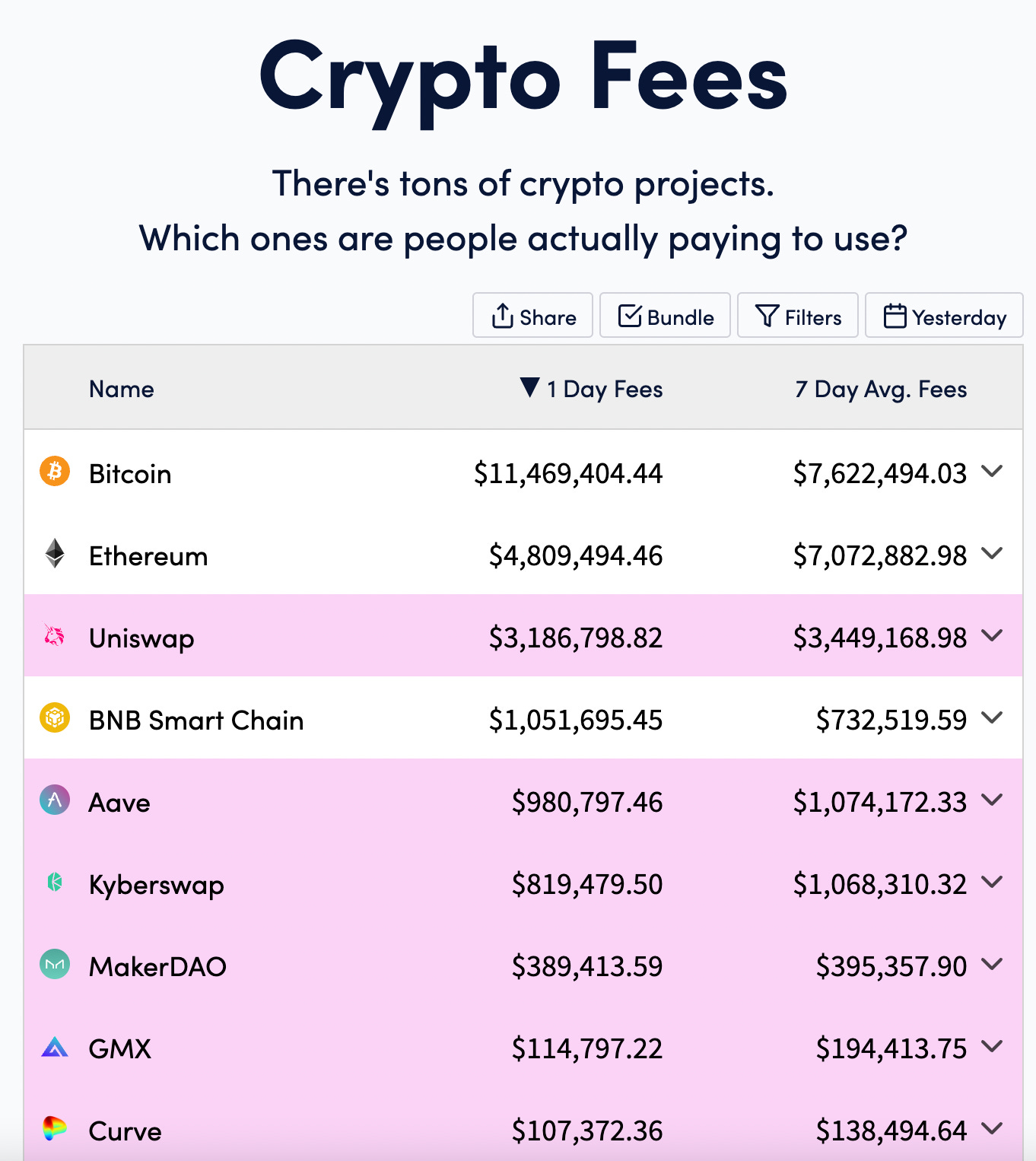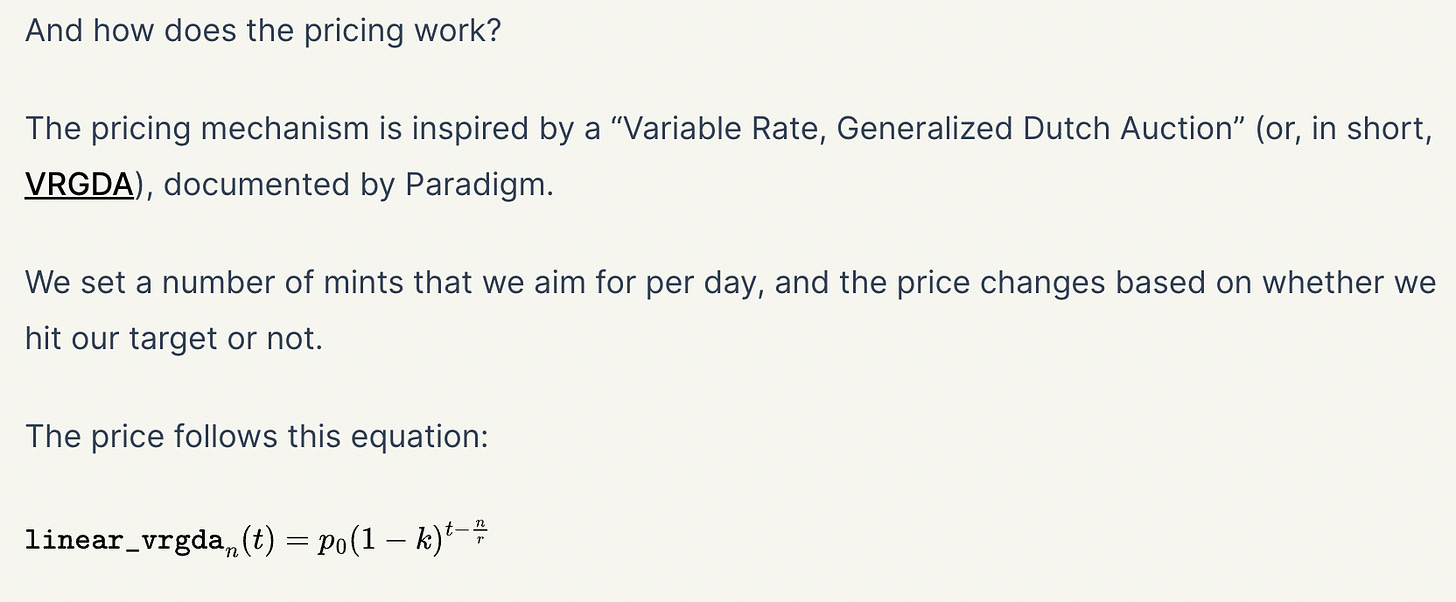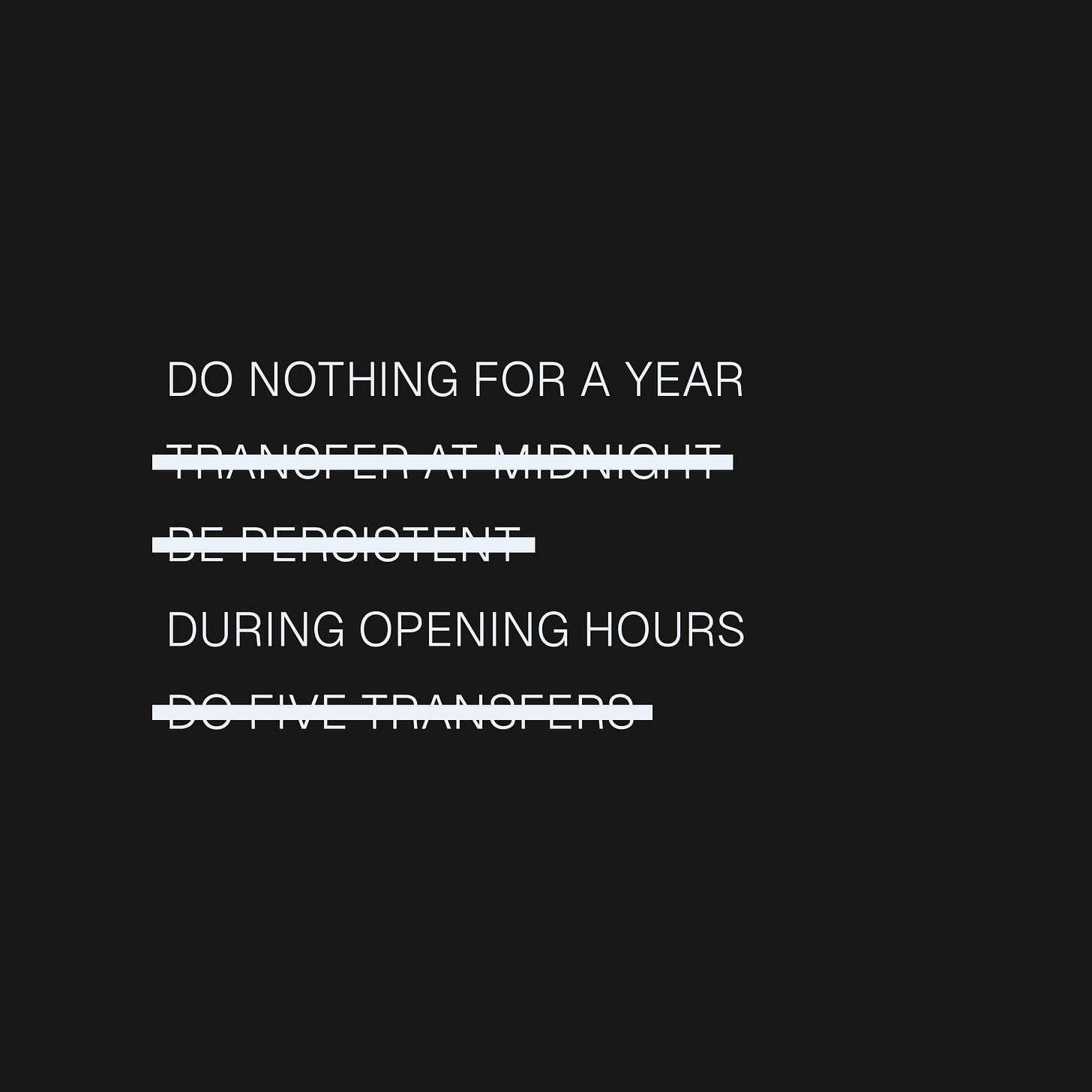The Garden of a Messy, Protocolized Rewilding vs the Fragile Monocultured Centralized Lawn
Anti-trust is only one lever. Also: Musical Tempo Bans, Generative AI in Premiere Pro, and Honest Work
Two articles from two different industries graced my feed this week, detailing ways to rethink the malaise at the end of conglomeration. We’ve arrived at a fragile state of affairs where a handful of companies are dampening prospects in both the web and media. In both instances, a solution is offered: anti-trust.
I agree that it’s a good lever, but it’s not the only one. I prefer solutions that have broader scope than just a US-centric solution. Before I get to that. Let’s delve into to the articles.
Rewilding The Internet
A thoroughly lyrical piece on the act of rewilding the web (ht Manu): moving away from the evolution its taken it in and reconstituting resiliency and diversity into it.
Some really great quotes throughout:
Instead, rewilders seek to rebuild resilience by restoring autonomous natural processes and letting them operate at scale to generate complexity.
I love the comparisons to urban planning, especially the change from modernist top-down city planning to the more flexible and encompassing city-planning of today.
Just like the crime-ridden, Corbusier-like towers Moses crammed people into when he demolished mixed-use neighborhoods and built highways through them, today’s top-down, concentrated internet is, for many, an unpleasant and harmful place. Its owners are hard to remove, and their interests do not align with ours.
A wonderful quote to hammer away the value of wild web:
Ecologists know that diversity is resilience.
and…
Part of rewilding means taking what’s been pulled into the big tech stack back out of it, and paying for the true costs of connectivity.
The article primarily focuses on rewilding through:
Anti-trust law and thus forcing/moving to interoperability.
Focused on how we get access.
U.S. antitrust law was created to break the power of oligarchs in oil, steel and railroads who threatened America’s young democracy. It gave workers basic protections and saw equal economic opportunity as essential to freedom.
and…
We must ensure regulatory and financial incentives and support for alternatives including common-pool resource management, community networks, and the myriad other collaborative mechanisms people have used to provide essential public goods like roads, defense and clean water.
It’s a great read. And now, onto Hollywood.
Life and Death of Hollywood
Daniel Bessner laments the conglomeration and subsequent collapse of the middle class of writers. (ht Dan Sickles).
“The industry is in a deep and existential crisis,” the head of a midsize studio told me in early August. We were in the lounge of the Soho House in West Hollywood. “It is probably the deepest and most existential crisis it’s ever been in. The writers are losing out. The middle layer of craftsmen are losing out. The top end of the talent are making more money than they ever have, but the nuts-and-bolts people who make the industry go round are losing out dramatically.”
Hollywood had become a winner-takes-all economy. As of 2021, CEOs at the majority of the largest companies and conglomerates in the industry drew salaries between two hundred and three thousand times greater than those of median employees.
Despite recent union wins, the result hasn’t been the best it can be. Transparency and accountability is still poor, resulting in a lack of leverage:
The studios will share viewership information with a limited number of WGA administrators for high-budget shows. The guild can then release that information only in a summary form, which, in the words of the contract, aggregates the data “on an overall industry level.” The guild cannot share any information at all on the performance of individual shows. A WGA representative told me that there would be no secondary process for writers to obtain that data.
As with the rewilding article, they also suggest anti-trust as a solution.
The film and TV industry is now controlled by only four major companies, and it is shot through with incentives to devalue the actual production of film and television. What is to be done? The most direct solution would be government intervention. If it wanted to, a presidential administration could enforce existing antitrust law, break up the conglomerates, and begin to pull entertainment companies loose from asset-management firms. It could regulate the use of financial tools, as deWaard has suggested; it could rein in private equity. The government could also increase competition directly by funding more public film and television. It could establish a universal basic income for artists and writers.
In both cases, I think the direction is right. Restoring competition through smart anti-trust gets you closer.
But, my biggest gripe with this as the lever is that it ultimately is a US-centric answer to the ailments. While the US has a massive influence (particularly in the web and media), one still has to contend with a world where someone in Ghana is using social media and aspirant TV writers can come from Indonesia. Anti-trust in the US will lead to downwind gains across the globe, but it’s ultimately not my favourite lever because of the lopsided outcomes for non-US people (the same goes for EU which is more prone to using regulation as lever).
There are other levers here that doesn’t depend on one particular nation.
People-Led Changes (creator and consumers)
Protocolization (Fediverse and Web3)
People-Led
A few people on the creator side at the right inflection points *can* cause systemic change. Brandon Sanderson can get Audible to change its fees to authors. Taylor Swift can ensure that labels pay artists if they sell their stakes in Spotify.
One thing that the Hollywood article recommend is that writers start pushing that they should own the rights, not the studios (which I like).
Writers will have to fight the studios again, but for more sweeping reforms. One change in particular has the potential to flip the power structure of the industry on its head: writers could demand to own complete copyright for the stories they create. They currently have something called “separated rights,” which allow a writer to use a script and its characters for limited purposes. But if they were to retain complete copyright, they would have vastly more leverage. Nearly every writer I spoke with seemed to believe that this would present a conflict with the way the union functions. This point is complicated and debatable, but Shawna Kidman and the legal expert Catherine Fisk—both preeminent scholars of copyright and media—told me that the greater challenge is Hollywood’s structure. The business is currently built around studio ownership. While Kidman found the idea of writer ownership infeasible, Fisk said it was possible, though it would be extremely difficult. Pushing for copyright would essentially mean going to war with the studios. But if things continue on their current path, writers may have to weigh such hazards against the prospect of the end of their profession. Or, they could leave it all behind.
But, as the rewilding article also denotes, if one follows some of the principles from Elinor Ostrom, we might be able to *all* do it, little by little: putting more of the web and media into more hands.
Through extensive research, Nobel-winning economist Elinor Ostrom found that “when individuals are well informed about the problem they face and about who else is involved, and can build settings where trust and reciprocity can emerge, grow, and be sustained over time, costly and positive actions are frequently taken without waiting for an external authority to impose rules, monitor compliance, and assess penalties.” Ostrom found people spontaneously organizing to manage natural resources — from water company cooperation in California to Maine lobster fishermen organizing to prevent overfishing.
It comes from decisions by both creators and consumers to opt into systems that move out of the way of mega-corps and platforms. That being said, this isn’t my favourite lever either because it often involves asking creators and consumers to make irrational trade-offs at individual cost. For example, a musician that skips Spotify can be costly. Those that succeed isn’t necessarily a reason for others to follow. It’s very survivor bias: one musician’s success might starve another if they tried the same.
A great example this week of it is when I discovered the new Cindy Lee album: Diamond Jubilee. The album was released in a throwback to 90’s era webpages, mimicking a geocities page.
You can only download it in .wavs or listen to the whole album stream on YouTube.
If you like it, send some cash via PayPal.
For the first time in a long while, I wanted the actual music in the form of files, but found myself a hypocrite, unable to fully wrap my head around how I want to incorporate this into my listening workflow. I listen to music on Spotify and YouTube and that’s it. But, it reminded me that a musician can force this change again and as a consumer, it forced me to reconsider again how I want to listen to music. I want to rethink this and maybe get back to buying mp3 and wavs again where I can.
But, can we expect the success of Cindy Lee to be applicable to new musicians starting out? Can they “afford” to skip Spotify? Maybe. They can always start by opting out and if it doesn’t work for them, opt back in and see if it helps. But, it’s not generalisable advice. People power is not generalised advice. Asking a new screenwriter to challenge studio domination by owning their rights and trying to license it to studios might be the wrong advice if we want the writer to continue a life-long career as a storyteller. There are many that can’t afford to make these choices: both as creators and consumers. Streaming music is cheap. Buying music is expensive.
Which takes me back to the best lever: when the best individual choice also becomes the best collective choice without requiring a government to enforce it.
Protocolization
If we’re sticking to the rewilding metaphor: a great protocol forms the foundation for an ecosystem. The web and the internet’s short journey thus far has all led to increasing forces of centralization and a subsequent force of decentralization. By now, the majority of the people on the web has experienced some form of digital loss: a platform going bankrupt, an API being rugged underneath you, links rotting, a billionaire trampling on your community, and a follower-base being held hostage by an algorithm.
It’s led to a desire for increased protocolization: ways to do the same things as before without a worry that we’ll get rugged.
The rewilding articles takes note of how the true cost of all this wonder had been obfuscated and that the path forward might entail picking that back up.
Part of rewilding means taking what’s been pulled into the big tech stack back out of it, and paying for the true costs of connectivity.
It’s something that web3 explicitly centers in attempts to decentralize and build a foundation from. The cost isn’t as obfuscated.
While web3 isn’t going to replace all of web2 (and its centralized institutions), it’s a force that drives into that direction and a part of that agreement and trade-off is that the costs aren’t hidden.
Take a recent experiment from Kiwi News (a reddit/hacker news clone) with crypto roots. To participate one need to purchase a pass. After several experiments, they are now trying new pricing algorithms. They are using Variable Rate, Generalized Dutch Auction that’s fully public.
This integration of web and media is one example.
In the cultural sphere, Digital Buffets, wrote this week about crypto’s cultural potential.
It comes in form of 5 C’s:
You can conceptualise these tools in terms of the five Cs, each representing the capabilities of blockchains as a (i) catalogue, (ii) custodian, (iii) canvas, (iv) computer, and (v) casino.
The most important parts here for the sake of rewilding is focusing on catalogue. There’s immense value in having a persistent record of culture mediated by a protocol.
In sum, as an open, verifiable and interoperable catalogue of digital objects, crypto has the potential to become a comprehensive map that helps participants to navigate online culture. I believe this is incredibly empowering, as we will then have more agency to decide how we want to produce and consume this culture. This is the starting point for why I think we should start being more intentional about building culture onchain.
I’ve espoused this before. This isn’t media as snapshots, but media over time. They bring all their provenance with them as networked and programmable media objects. They can’t die and that means they remain around for future reinvention. Old media doesn’t disappear, but can become compost. You can not only build more easily on what’s come before, but also more credibly open up culture for any future. The more that diversity grows, the more it induces more possibilities for cross-pollination. From the outside, culture in crypto looks like a mess as much as a rewilded garden does. A wild and resilient culture isn’t a monoculture. A wild and resilient media landscape isn’t a monoculture.
With information on past transactions accessible on the blockchain, we can also develop our own independent conclusions on how particular cultural assets should be valued. This is like playing in a casino where the past data on each game, e.g. winning rate, are accessible to all players. At the very least then, when transacting in digital cultural objects on the blockchain, we can take the necessary precautions or simply go in with our eyes wide open. To me, this is a far more preferable way to navigate the market for digital art and culture, even if I have to contend with gamblers and charlatans on the way.
Li Jin comes to similar conclusion in her remix of Walter Benjamin’s “The Work of Art in the Age of Mechanical Reproduction” by rephrasing it as art in the age of crypto reproduction.
The blockchain brings new dimensions to the discussion on art's value, authenticity, and relevance—and a new resonance to Walter Benjamin’s work. Through ownership tracked via a blockchain, crypto returns the idea of provenance and originality to digital art, restoring Benjamin’s concept of the “aura.” At the same time, crypto renews what Benjamin calls the “cult value” of art, particularly through rituals and traditions that arise from community ownership. And in an era of increasing cultural and political atomization, tokens present new pathways for fostering community cohesion and collective action in ways that both echo and challenge Benjamin’s ideas about the relationship between art and politics. The result is a redefinition of the relationship between art, technology, and culture in the 21st century.
There is an understandable aversion towards crypto because as Mat Dryhurst once said: the stark transparency creates a “shock of the nude”.
Public blockchains, through making visible latent forces such as financing, unequal returns, or scarce and valuable ownership, are bringing long existing dynamics to the surface to be scrutinized. These forces are not new, they are nude.
By surfacing the cost of things, there’s a cultural aversion much like how people can be averse to braggards talking about money and being flashy about it. I think this is perhaps the cost of rewilding. When you get back into nature, the complexity of it is overwhelming and one is faced with its shocks. A manicured lawn is devoid of life. A rewilded garden is full of it, but it also includes death.
As the rewilding article claims:
When we simplify complex systems, we destroy them, and the devastating consequences sometimes aren’t obvious until it’s too late.
Rewilding for those who are used to monoculture suburban lawns might see it as ugly: shrubs, dirt, wild flowers, and way too many insects. Regaining a rewilded web might mean we have to face a reality we aren’t used to anymore. Why am I excited about an album launch page that looks like this? I’m tired of a smoothed out web.
I’d rather have a transparent ledger of transactions than deal with the opaque and patronizing studio system. We don’t have to wait for anti-trust to do it for us. It means trying new things that might feel ugly at first. It’s being made aware of the cost that’s become hidden from us. It’s trying to move ownership back to the writers. It’s signing up for a fediverse account or playing with crypto and web3 protocols. All these actions are like replanting your monoculture lawn with shrubs and wild flowers. With it, it might attract those pesky insects (the grifters and scammers), but what we’ve gained is ultimately a more resilient lawn that can outlast and carry way more nature. I think it’s a reasonable trade-off that comes from transparent, diverse, and open protocols. If you dislike the insects, you can still enjoy your new rewilded garden from behind your screened windows in your kitchen (in other words, moderation still exists in this world).
Bonus Content!
Continued work on my new book this week. Made some more breakthroughs and good progress! I also watched the Fallout TV series this week and it was impeccable. It just kept getting better and better with each episode. After my newsletter on stakes, I can’t help but pay attention to it. It felt very clear how and why Fallout was a great watch. The primary philosophical stake of the TV show was the question of human nature and whether we can ultimately be good people in an unforgiving world. What is justified in our pursuits? Top notch TV. Go watch it!
Generative AI in Premiere Pro
I must say, this is probably the first time where I’ve truly felt I could see how generative AI can make a serious dent in film production.
It’s a bottom up approach starting with the scaffold of existing shots. You keep the detail or directing and acting while being able to mould the world to fit the narrative. I can easily see a few students shooting on barebones sets and filling in the world around them with it. Detail matters matter way more in storytelling than people imagine. But, it matters in specific parts. It is details in questions like why and how. Other details are just less important (like the exact interior of a spaceship). The reality currently is that it’s probably only showing us good examples, but it would likely be refined into the future.
Musical Tempo Bans
There’s been recent news about Chechnya banning certain musical tempos. As a music nerd it confused me… what… about… half-time? Gladly, Adam Neely helps to explain it.
What’s interesting is that I didn’t know that this was also a lever used in the past to ban jazz music. 😱
Honest Work Release
0xfff is quickly becoming one of my favourite artists. They have a new project launching this week called “Honest Work”. It’s a great example of process-as-art. The NFTs contain actionable to-dos.
"Honest Work" is a dynamic onchain artwork in the form of endless todo lists. Each token in the collection prompts the owner to follow various tasks that can be completed by transferring the token under the right conditions, at the right time, to the correct address, or sometimes by not transferring the token at all. Every time a task is ticked off new tasks are added to the list. This way each list can grow indefinitely in a Sisyphean way.
It totally fits the narrative of rewilding the web. Here’s a piece of art that skilfully uses the foundation of a blockchain to continue to create art with it, keeping track of a history of actionable todos over time that’s complete by the owner of it. Endless performance art, captured over a long time. Love it.
Cindy Lee - Diamond Jubilee
As expected. My favourite music this week is without a doubt: Cindy Lee. Enjoy. :)
Hope you get to enjoy a sunset! Stay safe and see you next week.
Simon







New reader here, vgr reader sent over from your SPC presentation which was dope.
Commenting mainly for my own thoughts and inspired by the rewilding piece:
Infra monoculture lead to attention capture, which exhibits the exact same lack of resilience described in the essay, as applied to our ability to comprehend, leading to vulnerable networked thoughts, narrative silos and collapse, filter bubbles etc.
Can we mount a case that we necessitate a rewilding of our online experience? i.e apply the analogy not to the network, but to our time online. If algorithmic feeds are highways for our mind, then what could be wildlife bridges?
In an act mainly of care for my friends and network, i started an assorted links newsletter attempting to support their rewilding transition, is why it's been on my mind - https://rewildyourmind.substack.com/about